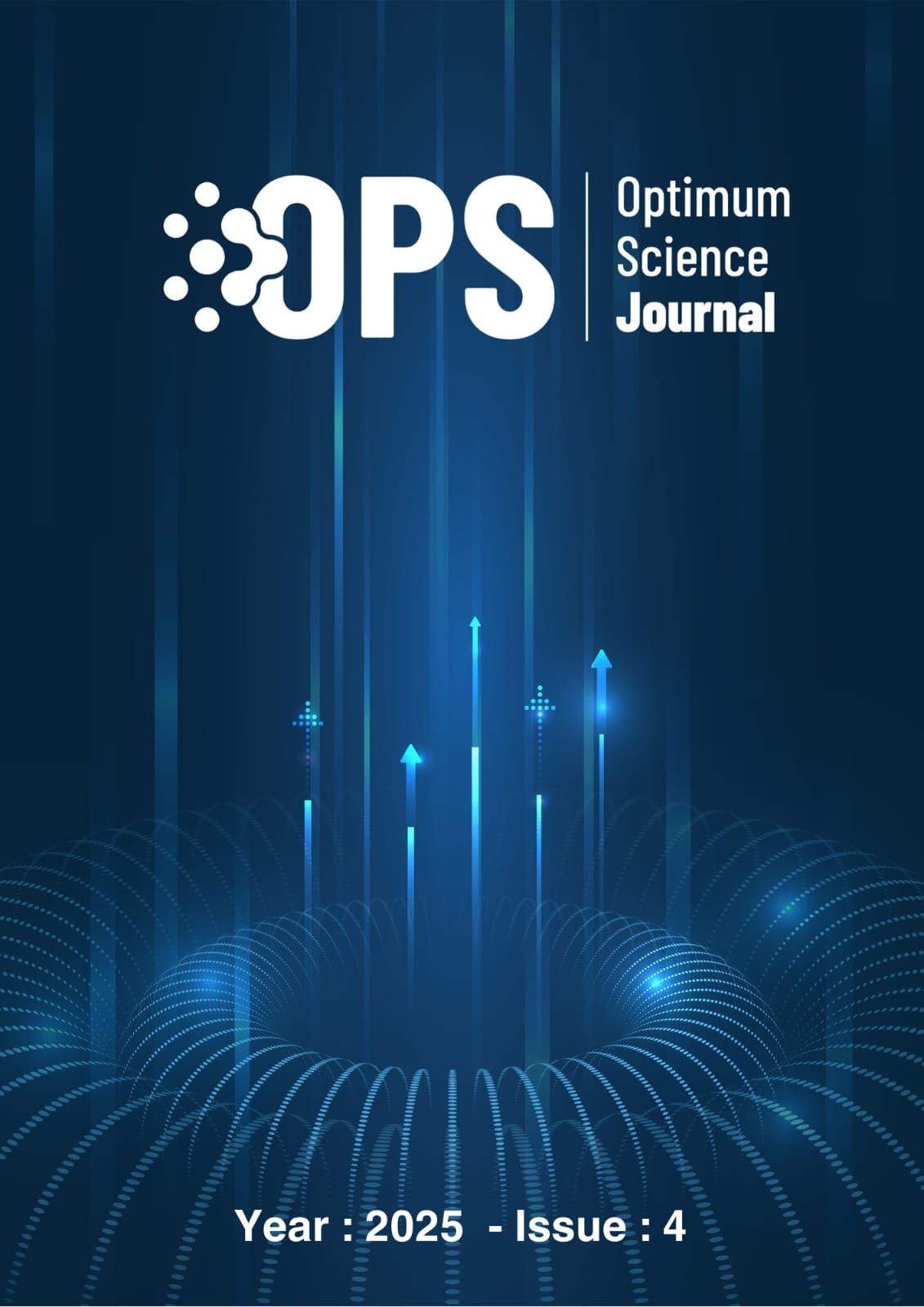The Relationship Between Biomimicry, Reverse Biomimicry, And Anthropocentric Design Strategies İn Relation To Solar Energy Efficiency Among Gifted Students
DOI:
https://doi.org/10.5281/zenodo.16881841Keywords:
Biomimicry, Solar energy, Gifted studentsAbstract
This study combines experimental measurements with conceptual design workshops involving six gifted middle school students, exploring how biomimetic, reverse biomimetic, and anthropocentric strategies can enhance solar energy efficiency. During the experimental phase, the performance of photovoltaic panels connected in series and in parallel at tilt angles of 0°, 30° and 60° was evaluated under varying irradiance and temperature conditions. This revealed the optimal power output and the impact of thermal rise on performance. During the conceptual phase, the students devised dynamic, leaf-inspired tracking mechanisms, dual-layer agrovoltaic modules that integrate energy capture with micro-sericulture, and portable, user-friendly panel kits that emphasise inclusivity. These integrated proposals demonstrate novel approaches to sustainable, adaptable and avaible in every school solar energy system.
References
Barab, S., & Squire, K. (2004). Design-based research: Putting a stake in the ground. Journal of the Learning Sciences, 13(1), 1-14. https://doi.org/10.1207/s15327809jls1301_1
Barab, S., Gresalfi, M., Ingram-Noble, A., Jameson, E., Hickey, D., Akram, S., & Kizer, S. (2009). Transformational play and virtual worlds: Worked examples from the Quest Atlantis project. International Journal of Learning and Media, 1(2). https://doi.org/10.1162/ijlm.2009.0023
Barron-Gafford, G. A., Pavao-Zuckerman, M. A., Minor, R. L., Sutter, L. F., Barnett-Moreno, I., Blackett, D. T., Thompson, M., Dimond, K., Gerlak, A. K., Nabhan, G. P., & Macknick, J. E. (2019). Agrivoltaics provide mutual benefits across the food–energy–water nexus in drylands. Nature Sustainability, 2(9), 848-855. https://doi.org/10.1038/s41893-019-0364-5
Benyus, J. M. (2002). Biomimicry: Innovation inspired by nature. United States: HarperCollins Publishers Inc.
Bülbül, M. Ş. (2025). Illuminating diversity in STEM: Integrating the cultural meaning of the sun through culturally responsive pedagogies. Educational Research & Implementation, 2(1), 49-60. https://doi.org/10.14527/edure.2025.04
Chiu, A., Price, C. A., & Ovrahim, E. (2015). Supporting elementary and middle school STEM education at the whole school level: A review of the literature. NARST 2015 Annual Conference, Chicago, IL.
Dupraz, C., Marrou, H., Talbot, G., Dufour, L., Nogier, A., & Ferard, Y. (2011). Combining solar photovoltaic panels and food crops for optimising land use: Towards new agrivoltaic schemes. Renewable energy, 36(10), 2725-2732. https://doi.org/10.1016/j.renene.2011.03.005
Fankhauser, C., & Christie, J. M. (2015). Plant phototropic growth. Current Biology, 25(9), PR384-R389. https://doi.org/10.1016/j.cub.2015.03.020
Franklin, K. A. (2008). Shade avoidance. New Phytologist, 179(4), 930–944. https://doi.org/10.1111/j.1469-8137.2008.02507.x
Hmelo-Silver, C. E., Duncan, R. G., & Chinn, C. A. (2007). Scaffolding and achievement in problem-based and inquiry learning: A response to Kirschner, Sweller, and Clark (2006), Educational Psychologist, 42(2), 99-107. https://doi.org/10.1080/00461520701263368
Jean, R. V. (1994). Phyllotaxis: A systemic study in plant morphogenesis. Cambridge University Press. https://doi.org/10.1017/CBO9780511666933
Jönsson, H., Heisler, M. G., Shapiro, B. E., Meyerowitz, E. M., & Mjolsness, E. (2006). An auxin-driven polarized transport model for phyllotaxis. Proceedings of the National Academy of Sciences USA, 103(5), 1633–1638. https://doi.org/10.1073/pnas.0509839103
Niklas, K. J. (1994). Plant allometry: The scaling of form and process. United States of America: The University of Chicago Press.
NRC -National Research Council- (2012). A framework for K-12 science education: Practices, crosscutting concepts, and core ideas. Washington, DC: The National Academies Press. https://doi.org/10.17226/13165
Reinhardt, D., Pesce, E. R., Stieger, P., Mandel, T., Baltensperger, K., Bennett, M., Traas, J., Friml, J., & Kuhlemeier, C. (2003). Regulation of phyllotaxis by polar auxin transport. Nature, 426(6964), 255-260. https://doi.org/10.1038/nature02081
Renzulli, J. S., & Reis, S. M. (2021). The schoolwide enrichment model: A how-to guide for educational excellence (3rd ed.). Routledge. https://doi.org/10.4324/9781003238904
Song, H., Liu, Y., Bian, H., Shen, M., & Lin, X. (2022). Energy, environment, and economic analyses on a novel hydrogen production method by electrified steam methane reforming with renewable energy accommodation. Energy Conversion and Management, 258, 115513. https://doi.org/10.1016/j.enconman.2022.115513
Strauss, S., Lempe, J., Prusinkiewicz, P., Tsiantis, M., & Smith, R. S. (2020). Phyllotaxis: Is the golden angle optimal for light capture? New Phytologist, 225(1), 499–510. https://doi.org/10.1111/nph.16040
UNESCO - United Nations Educational, Scientific and Cultural Organization- (2020). Education for sustainable development: A roadmap. Paris, France: UNESCO. https://doi.org/10.54675/YFRE1448
Upmeyer, D. J., & Koller, H. R. (1973). Diurnal trends in net photosynthetic rate and carbohydrate levels of soybean leaves. Plant Physiology, 51(5), 871–874. https://doi.org/10.1104/pp.51.5.871
Vandenbrink, J. P., Brown, R. I., Harmer, S. L. & Blackman, B. (2014). Turning heads: The biology of solar tracking in sunflower. Plant Science, 224, 20-26. https://doi.org/10.1016/j.plantsci.2014.04.006
Xie, H., Chu, H. C., Hwang, G. J., & Wang, C. C. (2019). Trends and development in technology-enhanced adaptive/personalized learning: A systematic review of journal publications from 2007 to 2017. Computers & Education, 140, 103599. https://doi.org/10.1016/j.compedu.2019.103599
Zhu, C. G., Chen, Y. N., Li, W. H., Chen, X. L., & He, G. Z. (2015). Heliotropic leaf movement of Sophora alopecuroides L.: An efficient strategy to optimise photochemical performance. Photosynthetica, 53(2), 231-240. https://doi.org/10.1007/s11099-015-0089-2
Downloads
Published
How to Cite
Issue
Section
License
Copyright (c) 2025 Optimum Science Journal

This work is licensed under a Creative Commons Attribution 4.0 International License.





